

GIS Research UK 2024
Interrogating the Spatio-Temporal Dynamics of Urban Footfall using Principal Component Analysis
Nick Malleson and Jack Liddle
School of Geography, University of Leeds
These slides: www.nickmalleson.co.uk/presentations.html
This project has received funding from the European Research Council (ERC) under the European Union’s Horizon 2020 research and innovation programme (grant agreement No. 757455)

Photo attributed to bobarcpics (CC BY 2.0)
Overview
Context: A better understanding of urban dynamics through the analysis of footfall data
Principal Component Analysis to isolate key temporal patterns at various urban locations
Identify surprisingly clear pattens:
general busyness
commuting behaviour
lunchtime activities
Data
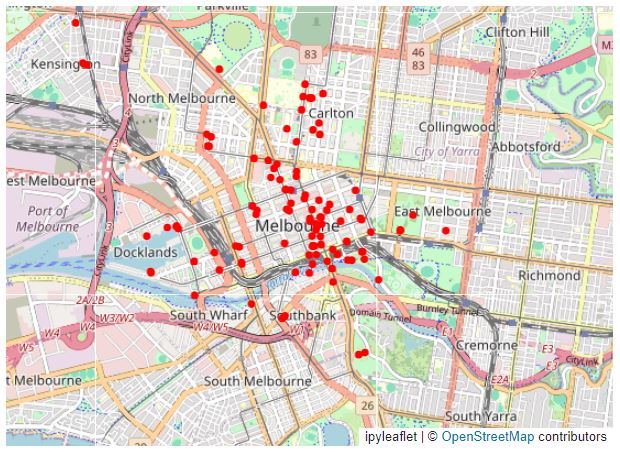
Melbourne Footfall Counters
Fantastic data available through the Melbourne Open Data Portal
Footfall counters
94 sensors counting hourly footfall
Some date back to 2009
We use 24 months of data (all of 2018 and 2019, avoiding COVID)
Footfall examples
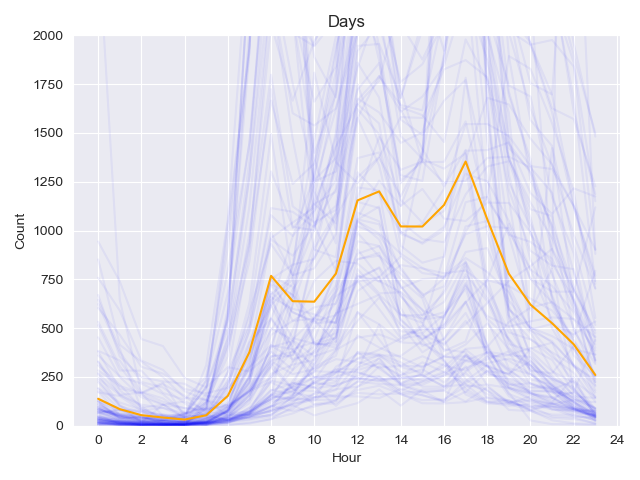
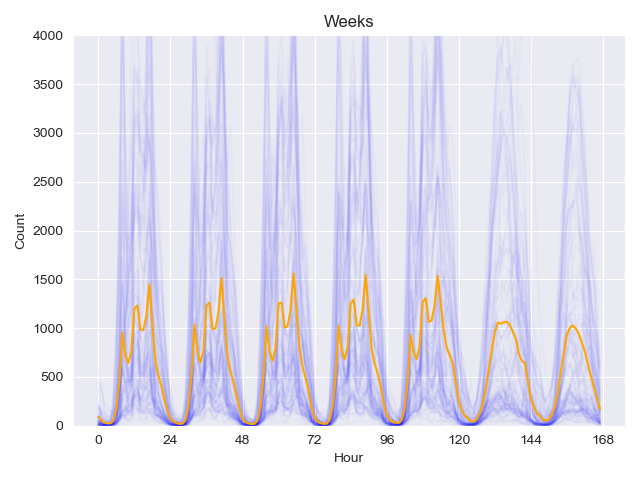
Principal Component Analysis (PCA)
Technique for reducing dimensionality in datasets
Isolate significant features; the 'principal components'
Features can be approximated by a linear combination of component loadings
Here: components are vectors of length 24 (or 168 if we look at weeks)
How many principal components?
Proportion of explained variance
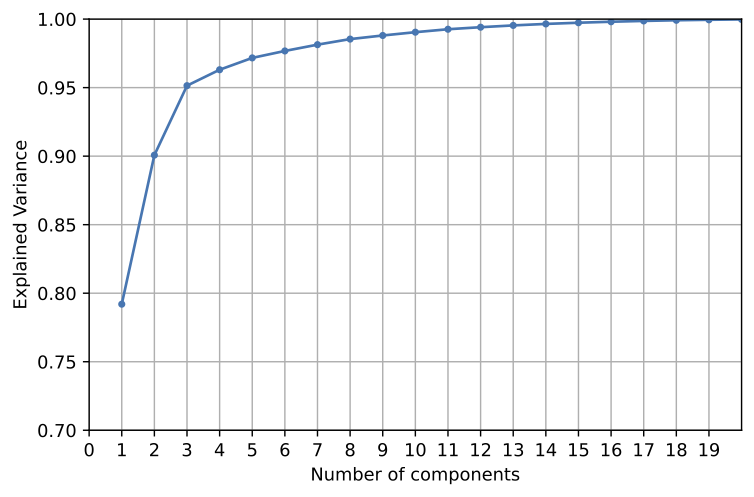
Results (i): Most Important Components
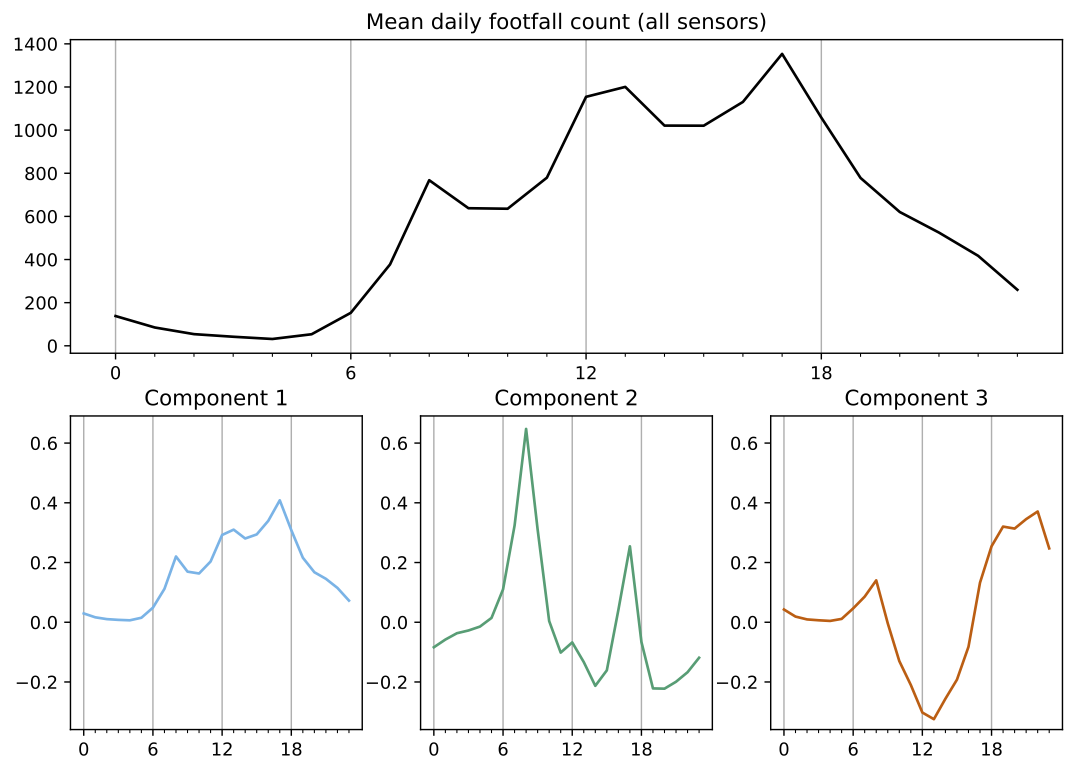

Most Important Components
Component 1 - busyness
Almost identical to mean daily activity
Busy places: component loadings > 1
Quiet places: component loadings < 1
Component 2 - commuting
Peaks in the morning and afternoon - typical rush hour
Component loadings represent presense of commuters
Component 3 - lunchtime surpression
Surpresses activity in the middle of the day
Component loadings < 0 will increase lunchtime footfall
Results (ii): Temporal Trends
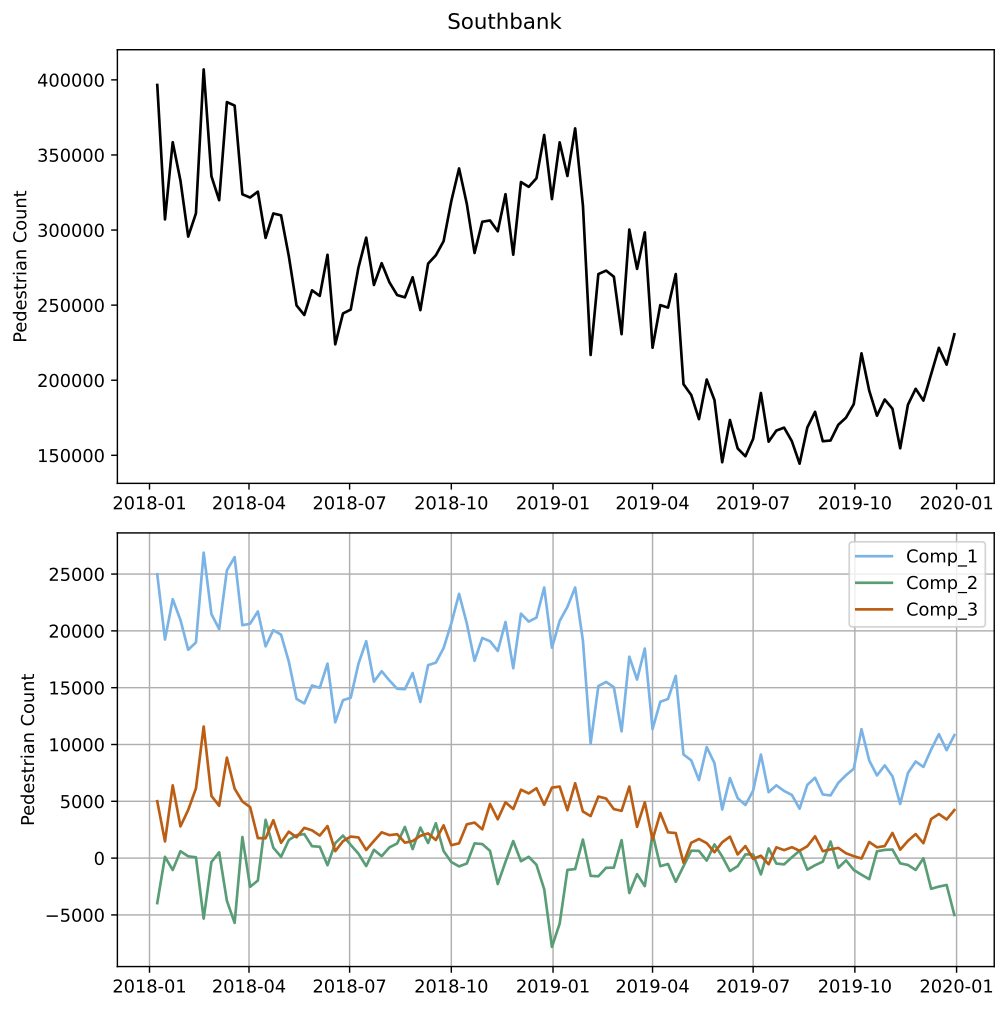
Results (iii): Component Interactions
UrbanUsageSpaceDemoDays.htmlSummary / Conclusions
Application of PCA to investigate (spatio-)temporal footfall trends
Striking result: the shape of the main components match recognisable footfall patterns
Opportunites to:
better understand use of the build environment
explore evolution of activities over time
cluster places / times based on activity structure
explore relationships between components
Many implications for policy making


GIS Research UK 2024
Interrogating the Spatio-Temporal Dynamics of Urban Footfall using Principal Component Analysis
Nick Malleson and Jack Liddle
School of Geography, University of Leeds
These slides: www.nickmalleson.co.uk/presentations.html
This project has received funding from the European Research Council (ERC) under the European Union’s Horizon 2020 research and innovation programme (grant agreement No. 757455)